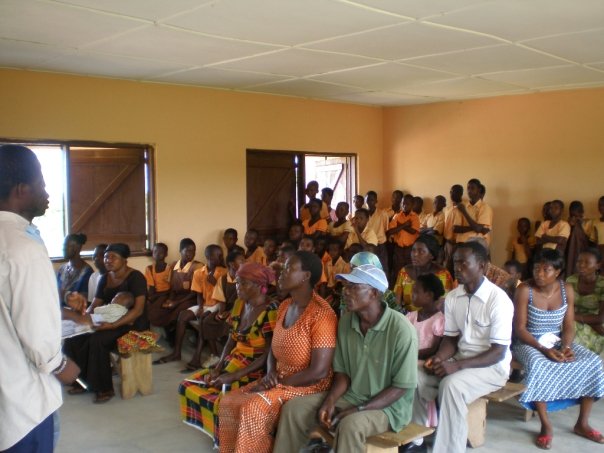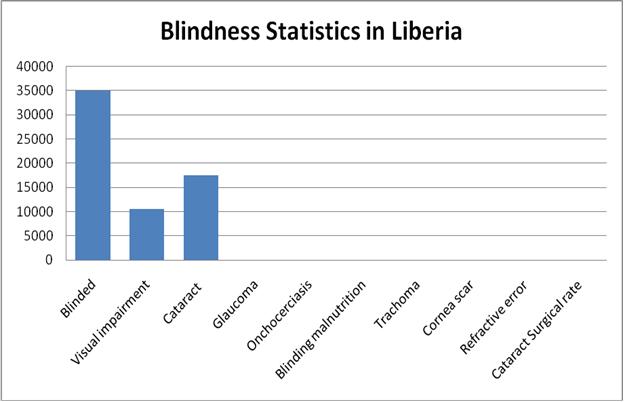NEW SIGHT EYE CENTER
New Sight Eye Center collaborates with both eye care and non-eye care programs to implement or achieve program objectives by providing comprehensive and quality eye care services so as to eliminate barriers of eye care in Liberia.
§ In Africa, 3.5 million people are blind. § In Liberia, 35,000 people are needlessly blind. § 80% of blindness in Liberia is preventable. § 90% of those living with blindness are found in rural communities. § The average cost of sight-restoring cataract surgery at the New Sight Eye Center is $50 US. |  |
Objectives 1. To make eye care available, affordable and accessible to deprived individuals, families and the overall underserved community through quality, regular outreach (eye screening and surgery) activities and public awareness. 2. To reduce or eliminate preventable blindness so as to improve the socio-economic standing of individuals, families and local community dwellers. 3. To rehabilitate the blind for productive living. 4. To set and run a modern and equipped referral eye health care center that will accommodate both local and foreign eye experts in the provision of quality eye health. |  |
5. To assist in the initiation and development of research in Liberia as well as collaborate with other local and international research groups.
6. To conduct and promote eye health education and screening in schools, universities, communities and integrate eye care programs into community projects.
7. To train eye health promoters/workers in the Country. To assist in the training of special (itinerant person) teacher for the blind/low vision for inclusive education of the blind (Integrate blind children into sighted children school).
8. To improve the quality of life of all age groups through sight restoration surgery, correction of refractive error and provision of visual aid for low vision children that will enable them regain their functional ability for activity learning.
9. To engage in any other activities geared towards poverty reduction, capacity building and sustainability.
Eye Care Challenges The World Health Organization estimates that 1% of the population in the developing world is blind. Considering the population of Liberia is approximately 3.5million (2008 census); there are about 35,000 Liberians who are needlessly blind. Cataract is the major cause of blindness in Liberia, accounting for 50% of cases, i.e. 17,500 people are living blind which can be preventable or treatable at a low cost. There is also an estimated 105,000 persons with visual impairment that require urgent attention. Liberia faces many posts -war challenges. |
If nothing is done to meet these challenges, the mortality and poverty rates will continue to increase. At present, the majority (80%) of the population is unemployed, living in abject poverty and cannot afford medical care.
 | I Since the completion of the war in 2003, there have been on researched carried out in eye care. As part of our program objectives, New Sight Eye Center will partner with the National Eye Care Program (Ministry of Health & Social Welfare) and international organizations to implement research in the country. 1.2% of overall blindness is due to glaucoma, which is the official estimate worldwide. However, this estimate may not indicate the correct incidence in West Africa as existing literature on glaucoma-related blindness in West Africa states that there is 2% blindness in The Gambia, 20% in Sierra Leone, and 23% in Nigeria. |
Constraints or gaps that hinder adequate delivery of eye care in Liberia are:
Ø Lack of adequately trained eye health professionals due to the complete absence of an ophthalmic training institution and special (itinerant) teacher for the inclusive education of the blind children into sighted children school. Limited available resources to support eye care programs in the Country.
Ø Lack of quality, effective and regular community eye screening and surgical outreach programs (in rural area) to reach those living in abject poverty as well as underserved communities.
Ø The complete absence of school screening, health education and awareness programs in schools and communities.
Ø Lack of standard rehabilitation programs for the blind children/ adults especially those living in rural area.
